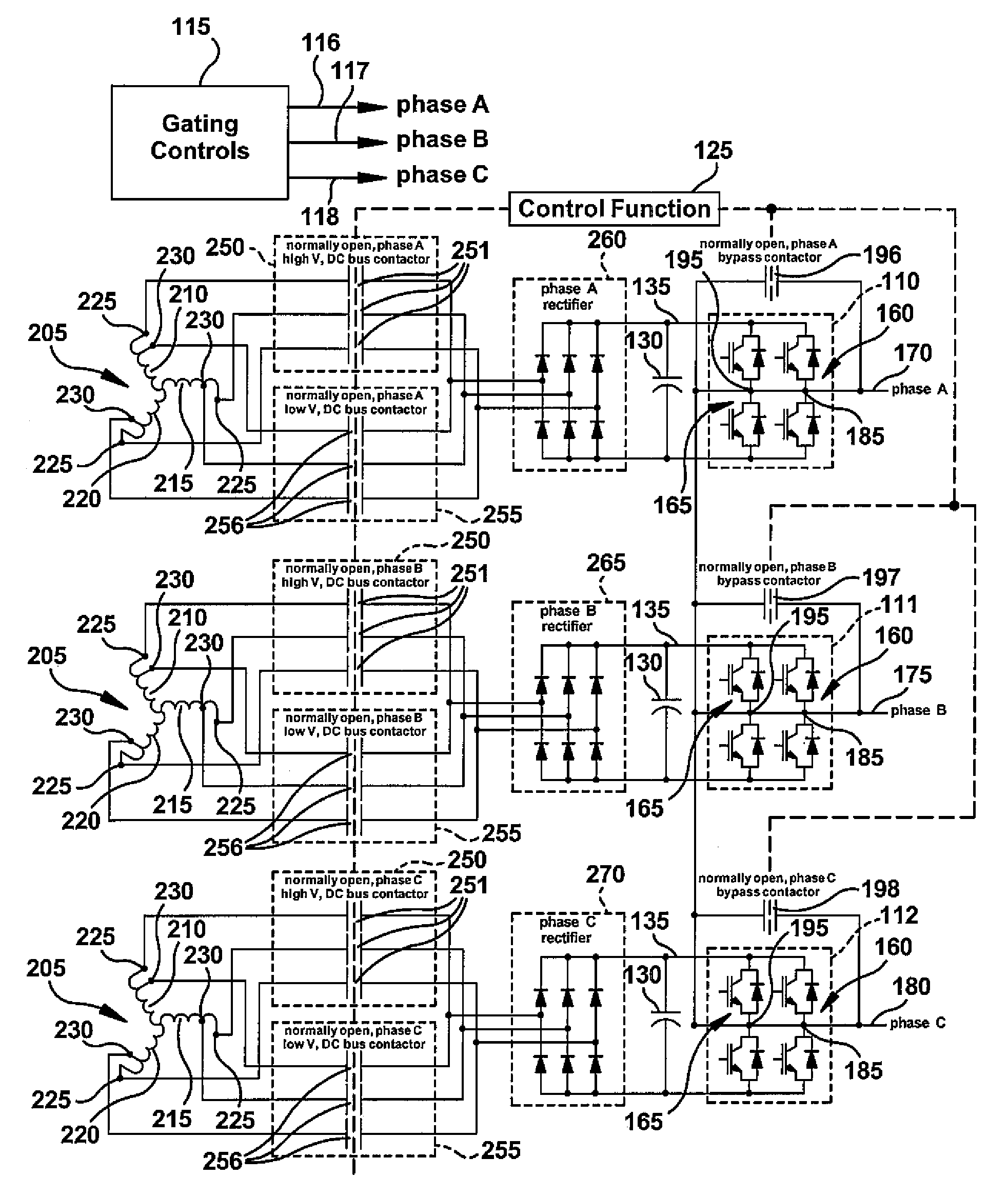Dual voltage wye-connected H-bridge converter topology for powering a high-speed electric motor
a converter and high-speed technology, applied in the direction of power conversion systems, ac-ac conversion, electrical equipment, etc., can solve the problems of increasing the probability that any one individual component switch may randomly fail, increasing the number of components that can fail, and often requiring a high degree of reliability, so as to minimize switching loss, maximize bridge output power capability, and high dc-bus voltage
- Summary
- Abstract
- Description
- Claims
- Application Information
AI Technical Summary
Benefits of technology
Problems solved by technology
Method used
Image
Examples
Embodiment Construction
[0022]The following embodiments of the present invention have many advantages, including providing a converter that has a capability to continue operation with failure of an H-bridge output phase. This new topology allows for the dc-bus to be operated at two different voltage levels, depending upon the mode of operation. In normal operation the dc-bus voltage is operated at the lower level, which reduces the power loss in the semiconductor switches, allowing the wye-connected H-bridge converter to put out more current with the same temperature rise in the power switches. This also improves the reliability of the power switches. When an H-bridge output phase has failed, the failed bridge can be bypassed, and the dc-bus voltage is operated at the higher level to increase output voltage capability. The inventive H-bridge converter utilizes synchronous switching waveforms in both normal operation and operation with one H-bridge phase bypassed. Zero current switching patterns with notche...
PUM
 Login to View More
Login to View More Abstract
Description
Claims
Application Information
 Login to View More
Login to View More - R&D
- Intellectual Property
- Life Sciences
- Materials
- Tech Scout
- Unparalleled Data Quality
- Higher Quality Content
- 60% Fewer Hallucinations
Browse by: Latest US Patents, China's latest patents, Technical Efficacy Thesaurus, Application Domain, Technology Topic, Popular Technical Reports.
© 2025 PatSnap. All rights reserved.Legal|Privacy policy|Modern Slavery Act Transparency Statement|Sitemap|About US| Contact US: help@patsnap.com



